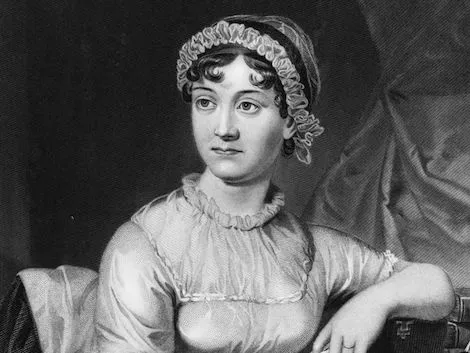
Reading Pathways: Jane Austen Books
This content contains affiliate links. When you buy through these links, we may earn an affiliate commission.
Have you ever wondered about the best Jane Austen books? Been confused about the reading order? Austen is well and truly entrenched in the Western literary canon (much to the despair of authors like Charlotte Brontë and Mark Twain, who would’ve been delighted if, say, Jane’s sister Cassandra had pulled an Amy March on all her manuscripts), and her spot is well-earned. But if you’ve never read her before, here’s a handy guide to Austen’s work.
 By way of sisters Elinor and Marianne Dashwood, this novel presents the contrasts between two opposite ways of living: one discreet and pragmatic, the other open and passionate. It seeks to explore which is better or more necessary for existing in society. The satire that would be so integral to Jane Austen’s work is already masterfully handled in her first novel.
Fun fact: it took this novel SIXTEEN YEARS to find a publisher.
Media adaptations: Sense and Sensibility (1995), Sense and Sensibility (2014)
By way of sisters Elinor and Marianne Dashwood, this novel presents the contrasts between two opposite ways of living: one discreet and pragmatic, the other open and passionate. It seeks to explore which is better or more necessary for existing in society. The satire that would be so integral to Jane Austen’s work is already masterfully handled in her first novel.
Fun fact: it took this novel SIXTEEN YEARS to find a publisher.
Media adaptations: Sense and Sensibility (1995), Sense and Sensibility (2014)
 Call me a cliché, but this is my comfort Austen. The story of the country girl who refuses to marry without affection despite knowing she will be destitute when her father dies absorbs me every time. But, again, it’s the biting satire that brings this story to life, filled to the brim with characters who make Pride and Prejudice a world upon itself.
Fun fact: it was originally supposed be called First Impressions, but the publishers wanted to capitalize on the success of Sense and Sensibility, so a similar title was born.
Media adaptations: Pride and Prejudice (1995), Pride and Prejudice (2005), Pride and Prejudice (1940), Bride and Prejudice (2004), The Lizzie Bennet Diaries (2012–2013)
Call me a cliché, but this is my comfort Austen. The story of the country girl who refuses to marry without affection despite knowing she will be destitute when her father dies absorbs me every time. But, again, it’s the biting satire that brings this story to life, filled to the brim with characters who make Pride and Prejudice a world upon itself.
Fun fact: it was originally supposed be called First Impressions, but the publishers wanted to capitalize on the success of Sense and Sensibility, so a similar title was born.
Media adaptations: Pride and Prejudice (1995), Pride and Prejudice (2005), Pride and Prejudice (1940), Bride and Prejudice (2004), The Lizzie Bennet Diaries (2012–2013)
 This is the one Austen that you can say, unequivocally, is pure fun. Both a satire and a parody, Jane was poking fun at the Gothic genre, defending the novel as a literary form, and giving us a delightful love story, all at once.
Fun fact: It was originally called Susan.
Media adaptations: Northanger Abbey (1987), Northanger Abbey (1993), Northanger Abbey (2007).
This is the one Austen that you can say, unequivocally, is pure fun. Both a satire and a parody, Jane was poking fun at the Gothic genre, defending the novel as a literary form, and giving us a delightful love story, all at once.
Fun fact: It was originally called Susan.
Media adaptations: Northanger Abbey (1987), Northanger Abbey (1993), Northanger Abbey (2007).
 This is Austen’s most controversial work. People either consider it one of Jane Austen’s best books, others one of her worst. Perhaps because there are only glimpses of what the reader has come to expect from a Jane Austen novel, putting forward a study of what constitutes morality instead. It is one of the only two Austens to refer directly to the British slave trade, although whether it was considered an evil or simply the way things were is left unsaid.
Fun fact: Jane’s mother found Fanny, the protagonist, “insipid.”
Media adaptations: Mansfield Park (1983), Mansfield Park (1999), Mansfield Park (2007)
This is Austen’s most controversial work. People either consider it one of Jane Austen’s best books, others one of her worst. Perhaps because there are only glimpses of what the reader has come to expect from a Jane Austen novel, putting forward a study of what constitutes morality instead. It is one of the only two Austens to refer directly to the British slave trade, although whether it was considered an evil or simply the way things were is left unsaid.
Fun fact: Jane’s mother found Fanny, the protagonist, “insipid.”
Media adaptations: Mansfield Park (1983), Mansfield Park (1999), Mansfield Park (2007)
 Jane described Emma Woodhouse, when she was writing the novel, as someone who “nobody but me will much like.” She’s an incessant meddler: always thinking she knows best, she invariably attempts to help her friends and invariably muddles it up. Like in S&S and P&P, a great deal of Emma’s charm lies in the society she weaves around her protagonists. This book is a delicious comedy of errors that remains irresistible today.
Fun fact: it took Austen exactly one year, two months and eight days to write Emma from start to finish—Cassandra Austen noted that it was “begun Jany 21st 1814, finished March 29th 1818.”
Media adaptations: Emma (1996), Clueless (1995), Emma Approved (2013–2014)
Jane described Emma Woodhouse, when she was writing the novel, as someone who “nobody but me will much like.” She’s an incessant meddler: always thinking she knows best, she invariably attempts to help her friends and invariably muddles it up. Like in S&S and P&P, a great deal of Emma’s charm lies in the society she weaves around her protagonists. This book is a delicious comedy of errors that remains irresistible today.
Fun fact: it took Austen exactly one year, two months and eight days to write Emma from start to finish—Cassandra Austen noted that it was “begun Jany 21st 1814, finished March 29th 1818.”
Media adaptations: Emma (1996), Clueless (1995), Emma Approved (2013–2014)
 Published posthumously, it has been deemed both the most mature and most romantic of her stories. When she was barely nineteen, and heeding the advice of her dearest friend, Anne Elliot cancelled her engagement to Frederick Wentworth. Eight years later, the two lovers reunite.
Fun fact: Jane discarded the last two chapters of the novel and rewrote them in its entirety. Pieces of the manuscript are now in the British Museum.
Media adaptations: Persuasion (1995), Persuasion (2008)
Published posthumously, it has been deemed both the most mature and most romantic of her stories. When she was barely nineteen, and heeding the advice of her dearest friend, Anne Elliot cancelled her engagement to Frederick Wentworth. Eight years later, the two lovers reunite.
Fun fact: Jane discarded the last two chapters of the novel and rewrote them in its entirety. Pieces of the manuscript are now in the British Museum.
Media adaptations: Persuasion (1995), Persuasion (2008)
The Novels
Austen completed six novels in her lifetime. No two of them are alike—not only did Austen write them with sometimes a decade-long gap in between, she also enjoyed experimenting with different types of fiction. Austen purists (and indeed, anyone who might want to see how her style and preferences evolved) might want to read her work in chronological order. But even this approach is littered with difficulties: Sense and Sensibility, Pride and Prejudice and Northanger Abbey were completed by her twenty-fifth birthday, but remained unpublished until at least 1811, when Austen was 35, allowing for multiple revisions and rewritings. Personally, I recommend reading them in the order in which they were originally written, so that’s how I structured this list. To make things clearer, I also add publication dates next to the title.Sense and Sensibility (1811)
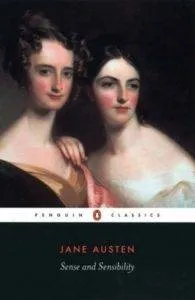
Sense and Sensibility
Pride and Prejudice (1813)
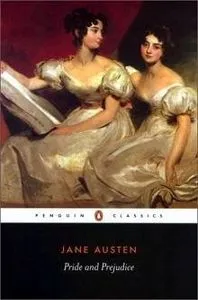
Pride and Prejudice
Northanger Abbey (1817)
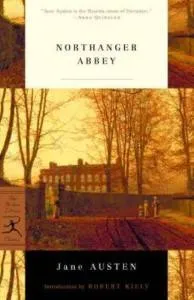 This is the one Austen that you can say, unequivocally, is pure fun. Both a satire and a parody, Jane was poking fun at the Gothic genre, defending the novel as a literary form, and giving us a delightful love story, all at once.
Fun fact: It was originally called Susan.
Media adaptations: Northanger Abbey (1987), Northanger Abbey (1993), Northanger Abbey (2007).
This is the one Austen that you can say, unequivocally, is pure fun. Both a satire and a parody, Jane was poking fun at the Gothic genre, defending the novel as a literary form, and giving us a delightful love story, all at once.
Fun fact: It was originally called Susan.
Media adaptations: Northanger Abbey (1987), Northanger Abbey (1993), Northanger Abbey (2007).
Mansfield Park (1814)

Mansfield Park
Emma (1816)

Emma
Persuasion (1818)
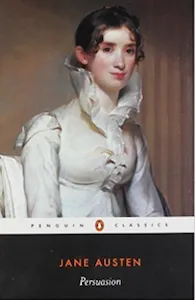
Persuasion











